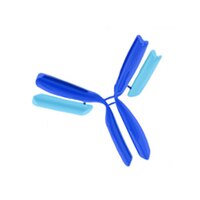OP13L Sigma-AldrichAnti-N-Myc Mouse mAb (NCM II 100)
Empfohlene Produkte
Übersicht
| Replacement Information |
|---|
Key Spec Table
| Species Reactivity | Host | Antibody Type |
|---|---|---|
| H, M | M | Monoclonal Antibody |
| Product Information | |
|---|---|
| Form | Lyophilized |
| Formulation | Lyophilized from a volatile buffer, 100 µg BSA. |
| Positive control | IMR5 cells |
| Preservative | None |
| Quality Level | MQ100 |
| Physicochemical Information |
|---|
| Dimensions |
|---|
| Materials Information |
|---|
| Toxicological Information |
|---|
| Safety Information according to GHS |
|---|
| Safety Information |
|---|
| Product Usage Statements |
|---|
| Packaging Information |
|---|
| Transport Information |
|---|
| Supplemental Information |
|---|
| Specifications |
|---|
| Global Trade Item Number | |
|---|---|
| Bestellnummer | GTIN |
| OP13L | 0 |
Documentation
Anti-N-Myc Mouse mAb (NCM II 100) SDB
| Titel |
|---|
Anti-N-Myc Mouse mAb (NCM II 100) Analysenzertifikate
| Titel | Chargennummer |
|---|---|
| OP13L |
Literatur
| Übersicht |
|---|
| Brondyk, W.H. 1991. Oncogene 6, 1269. Ikegaki, N., et al. 1988. Adv. Neuroblastoma Research. 2, 133. LeGouy, E., et al. 1987. In Nuclear Oncogenes, Cold Spring Harbor Laboratory, 144. Cole, M.D., 1986. Annu. Rev. Gen. 20, 361. Ikegaki, N., et al. 1986. Proc. Natl. Acad. Sci. USA 83, 5929. Slamon, D.J., et al. 1986. Science 232, 768. Seeger, R.C., et al. 1985. New Engl. J. Med. 313, 1111. Brodeur, G.M., et al. 1984. Science 224, 1121. Michitsch, R.W., et al. 1984. Mol. Cell. Biol. 11, 2370. Kohl, N.E., et al. 1983. Cell 35, 603. Schwab, M., et al. 1983. Nature 305, 245. |
Literaturstellen
| Titel | |
|---|---|
|
|
| Datenblatt | ||||||||||||||||||||||||||||||||||||||||||||
|---|---|---|---|---|---|---|---|---|---|---|---|---|---|---|---|---|---|---|---|---|---|---|---|---|---|---|---|---|---|---|---|---|---|---|---|---|---|---|---|---|---|---|---|---|
|
Note that this data sheet is not lot-specific and is representative of the current specifications for this product. Please consult the vial label and the certificate of analysis for information on specific lots. Also note that shipping conditions may differ from storage conditions.
|







